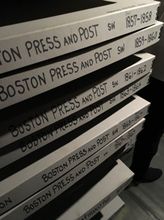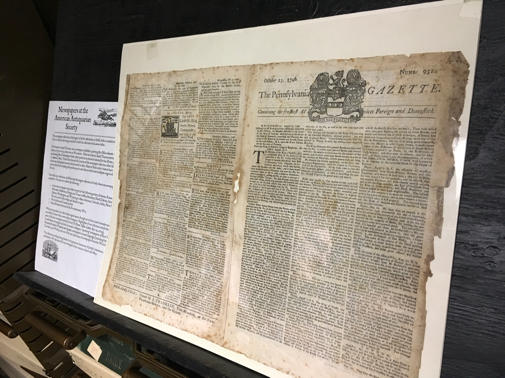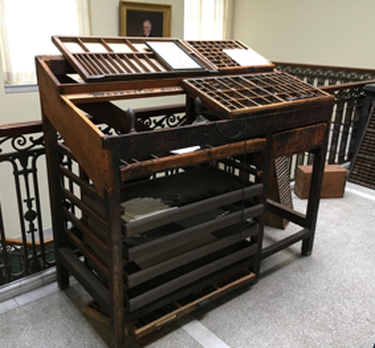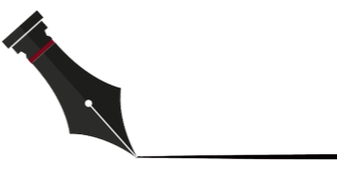 Today I visited the American Antiquarian Society (AAS) in Worcester, Massachusetts where Jim Moran, the AAS’s Director of Outreach, arranged with the local group History Camp-Boston for a special behind-the-scenes talk and tour. This incredible archive is the repository for all things printed in our country’s 50 states, ranging from 1640—1876. These dates directly correspond with the operation of the first printing press in Boston through the enactment of copyright laws by the Library of Congress. In 1876, 2 copies of any publication made in America were required to be sent to Washington; because the LOC had a stable and larger infrastructure for housing the materials, the AAS cut off the collection as of that year and turned its focus to acquisition. This strategy has made the AAS an archive of national scope that every researcher should include in his/her go-to repository list. About the AASThe AAS was founded in 1812 by Revolutionary War patriot and local printer Isaiah Thomas. During the colonial years, when he ran his own very successful business in Massachusetts, his passion was to collect samples of publications from printers throughout the colonies. He wanted to study and compare technology and materials, with the collateral result of amassing an important historical collection. This was the birth of the AAS as both a learned society and a major independent research library. The Collection The AAS library today houses the largest and most accessible collection of books, pamphlets, broadsides, newspapers, periodicals, music, and graphic arts material printed through 1876 in what is now the United States. Predating the New England Historic Genealogical Society (NEHGS) and New York Genealogical and Biographical Society (NYG&BS), the AAS also holds manuscripts and a substantial collection of secondary texts, bibliographies, and digital resources and reference works related to all aspects of American history and culture before the twentieth century. Types of ephemera run the gamut from 1814 voter ballots from a single town to inserts that were tucked into boxes with new watches. Most impressive, however, is the scope and depth of the newspaper archive. Access the ManuscriptsThe collection has been fully digitized up through 1820, with finding aids for the subsequent years. The entire digital collection can be accessed on site at the AAS. Remote (at-home) access is available for a small portion of the collection. Where AAS has partnered with outside vendors, such as GenealogyBank.com and Ancestry.com, the vendors only have a portion of the full collection in their databases. If you are planning to research on site at the library, visit the AAS website for how to plan and what to expect. The library is closed-stack and non-circulating. Visitors fill out call slips for item retrieval and view the materials in the reading room. Non-flash photography is encouraged, with photocopying and digital imaging services also available. Typesetter Trivia!The metal letters used in hand setting a printing press were stored in a case of wooden drawers next to the printing press. This is Isaiah Thomas's actual LETTER CASE on display at the AAS, To be time efficient, and to be able to work quickly without looking, typesetters arranged the letter blocks in a specific order: the most frequently used letters were placed in the LETTER CASE where they could be reached easily. Specifically, the capital letters were stored in the UPPER CASE and the regular letters were stored in the LOWER CASE. (And now you know where those terms originated!) American Antiquarian Society
Address: 185 Salisbury Street, Worcester, Massachusetts 01609 Tel.: 508-755-5221 Email: [email protected] Website: www.americanantiquarian.org
1 Comment
NORTHBOROUGH FREE LIBRARYI thought it would be important and timely to announce that the town library also subscribes to Ancestry.com. This database is available only in the library and has no remote access.
|
AuthorBeth Finch McCarthy
|



